Post-Pandemic Workplace Design Will Not Be the Same for All
Interior design principal Liz von Goeler offers thoughts on how the world can return to the workplace
 Sasaki
Sasaki
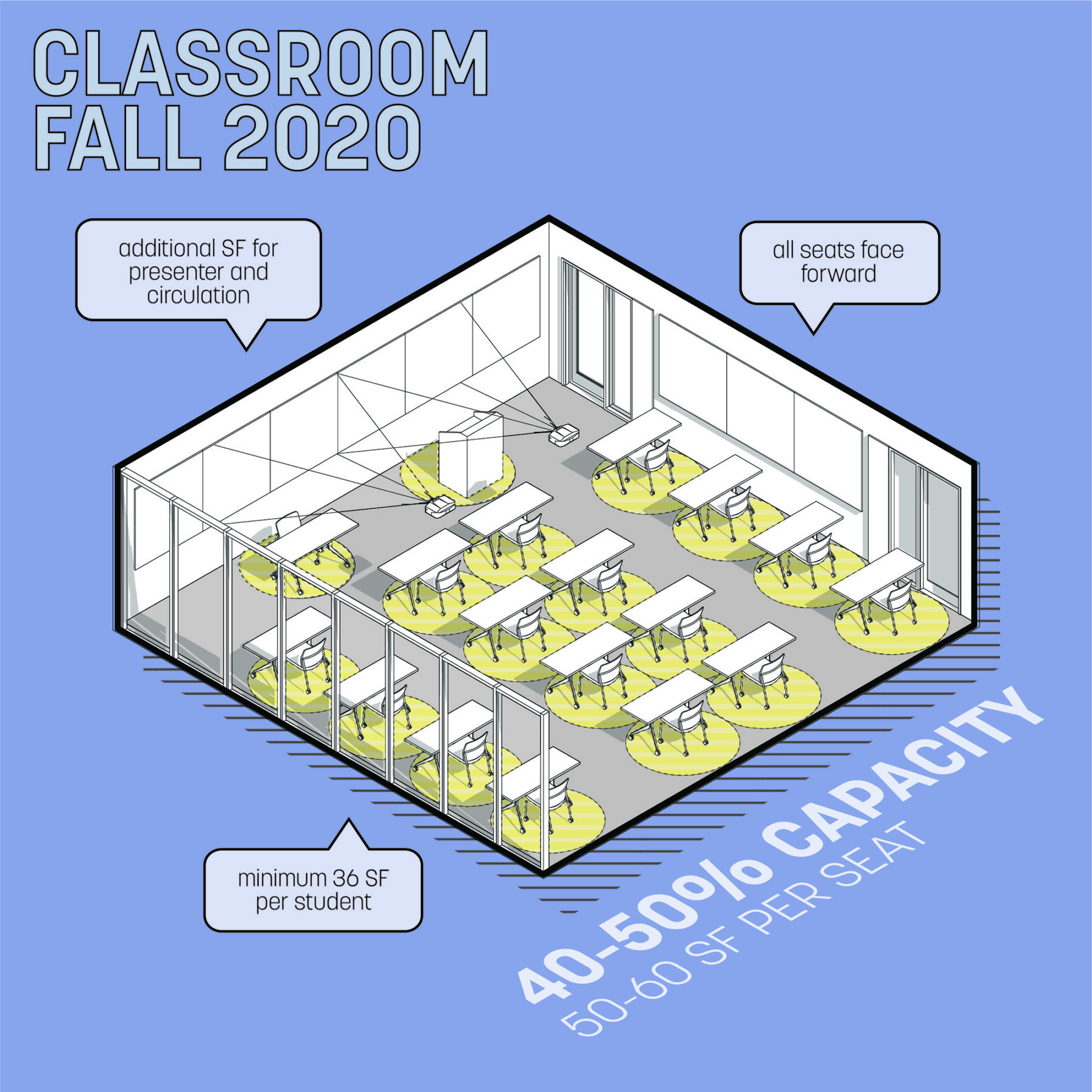
COVID-19 has turned the world of higher education upside down. After years of wondering if online learning would ever upend place-based learning, it suddenly did…literally overnight! Yet, for all the creativity and engagement we’ve managed to squeeze out of Zoom and other online platforms, many students and faculty long for a return to the physical classroom. Will anyone ever complain about an 8:00 a.m. or Friday class again?
In her recent op-ed, Brown University President Christina Paxon addressed this yearning by saying “…students will still benefit from all that makes in-person education so valuable: the fierce intellectual debates that just aren’t the same on Zoom, the research opportunities in university laboratories and libraries, and the personal interaction among students with different perspectives and life experiences.” Yet even if a return to campus is inevitable, we can all recognize it will look quite different, at least in the near term.
In the 1960s and prior, the preponderance of classrooms had students seated at individual desks, spaced apart, or in lecture halls with seats separated by tiers and all facing the same direction. Class sizes were much larger and space per seat much less than today’s standards. But since the 1970s, learning space design has emphasized smaller section cohorts, active learning, and more space per seat to enable hands-on-activity and project-based learning. This approach presents both an opportunity and a challenge amid COVID-19 concerns.
The trend of general classroom de-densification aligns with social distance requirements, yet current classroom standards do not go far enough. Social distancing suggests a minimum of six feet of separation between individuals in all directions. This equates to 36 square feet per person, however it does not account for things like circulation, which will only increase this space demand above the typical active learning space standards of 25-35 square feet per seat. Moreover, social distancing suggests that desks should all be turned in the same direction, rather than facing each other, to reduce transmission from virus-containing droplets. This, of course, directly contradicts the intent behind project-based learning whereby students sit and work together in the classroom, or even seminar-style discussions that favor face-to-face discourse.
In order to understand the impacts on learning environments, as well as consider how institutions might adapt their learning environments for the fall semester, we took a deep dive into our institutional database. When we examine a range of classroom prototypes, we can identify how adjustments to general use classrooms and lecture halls can be made to accommodate social distancing requirements:
In the case of a lecture hall, a prototypical 144-seat room with an average of 14 square feet per seat would maintain only 25-35 percent of its total capacity if you were to stagger seating at each row and leave three empty seats between students. This approach would result in triple the amount of space per seat, roughly 40-50 square feet. Meanwhile, a typical 40-seat flat-floor classroom with 25 square feet per seat could expect to retain only 40-50 percent of its capacity when rearranging and de-densifying to meet COVID-19 requirements.
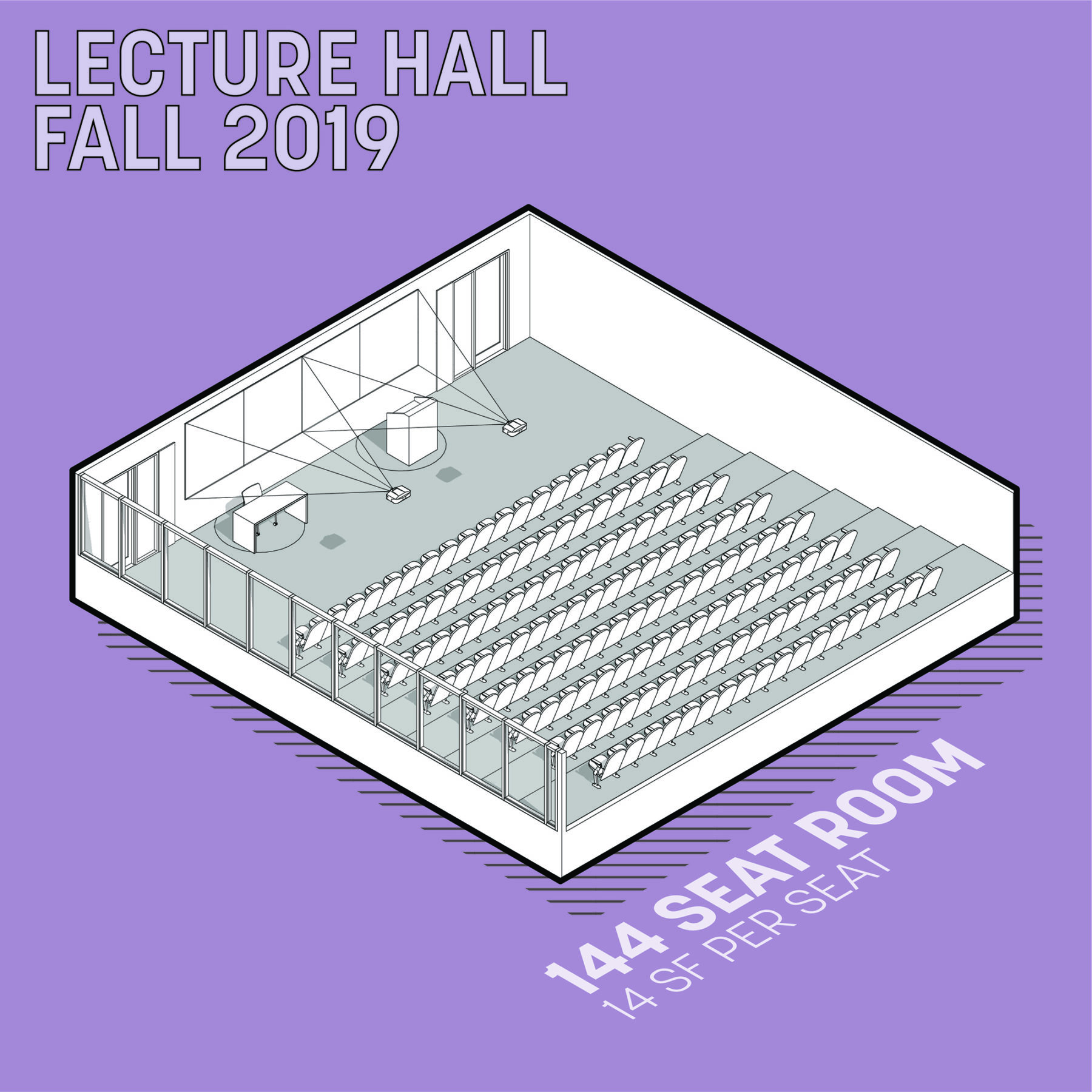
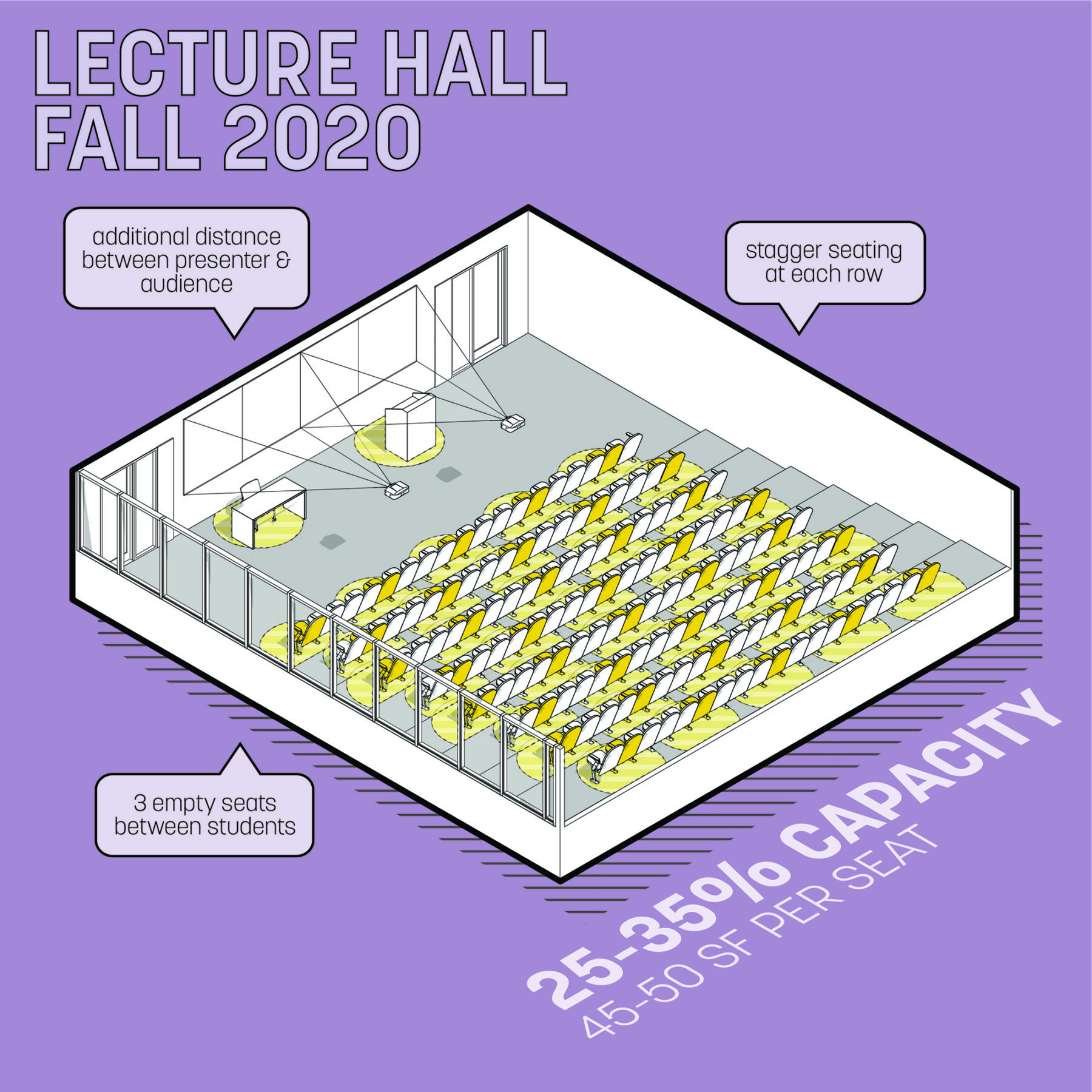
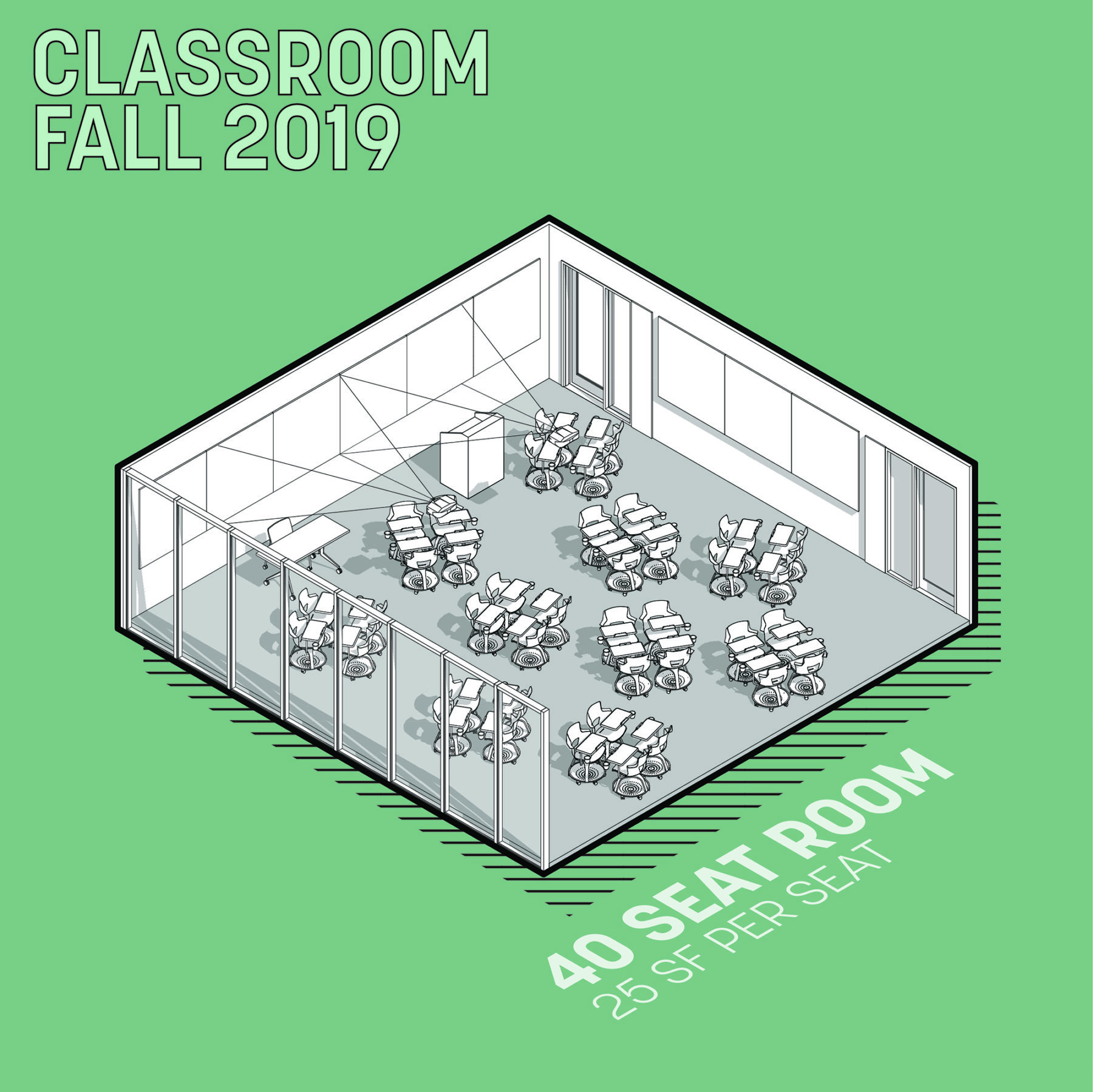
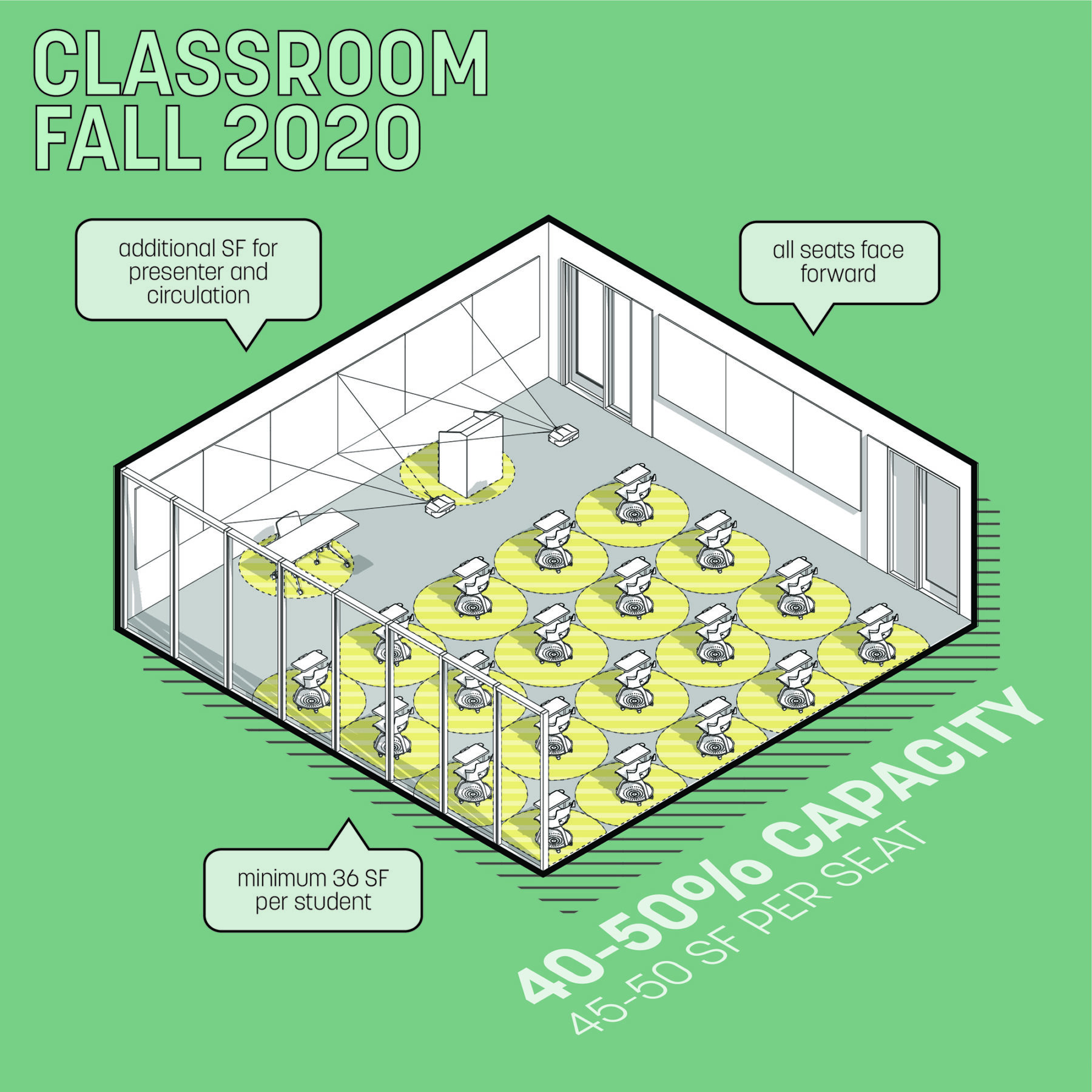
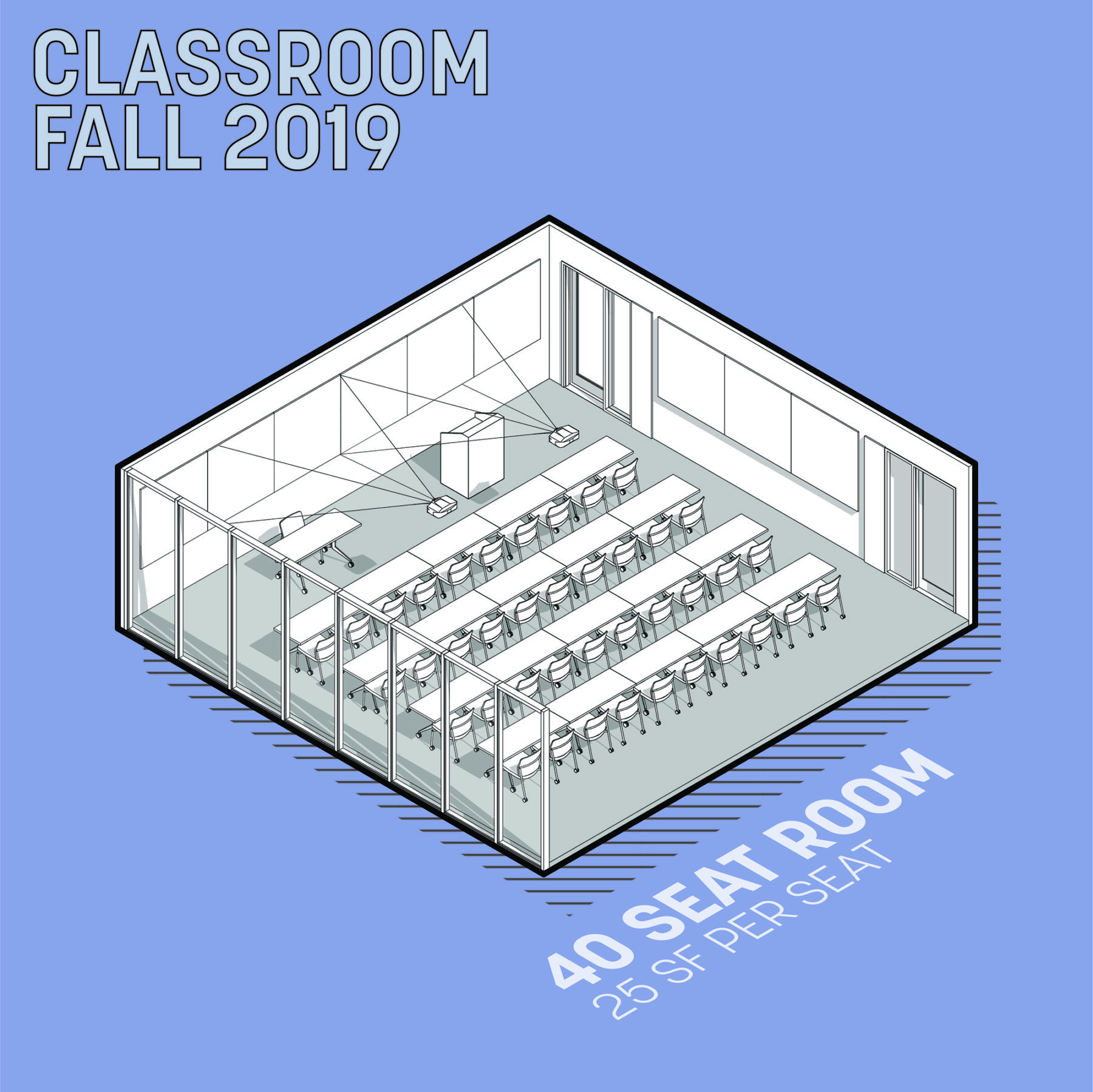

To understand the potential impact of individual strategies on an entire campus’s classroom inventory, we examined three different-sized institutions – small, medium, and large – from our database. When we examine specific size cohorts of classrooms, we find considerable variability; however, all of these institutions consistently lost 80-100 percent of their classrooms that seat over 51 students. Even in the 31-40-seat range, all three institutions lost between 69 and 93 percent of these rooms. In general, the findings from our study sample suggest that institutions of all sizes will temporarily need to conduct in-person classes in much smaller cohorts due to classroom size constraints.



These approaches outlined in this case study tracks with the work that many institutions will need to do if they are considering a return to place-based instruction in the fall or spring. Instructional spaces will need to be sorted based on fixed versus flexible seating arrangements. For rooms with flexible seating, furniture will need to be reconfigured and, likely, removed to align with density requirements. For fixed-seat spaces, chairs will need to be cordoned off in accordance with spacing guidelines. Of course, these physical changes will need to be accompanied by operational changes such as more frequent cleaning, increasing scheduling windows, and staggering class arrival and departure times to avoid overcrowding. Finally, creative adaptation of other campus spaces such as dining halls, conference centers, and event spaces into temporary classrooms can also help solve for immediate space needs.
These near-term changes to classrooms will help us address the physical requirements of social distancing, but they don’t totally solve for how we are teaching in these environments. Of course, those decisions will be up to the individual institutions and faculty. However, it does seem safe to conclude that project-based, hands-on team learning will be difficult to do in a classroom setting under these conditions. We will need to continue to expect more from online platforms to enable out-of-classroom exploration and collaboration. In this way, the notion of the “flipped classroom” may be temporarily “un-flipped.” That is, in the near term, didactic learning might be more place-based with collaborative learning happening via innovations in the online.
While it’s daunting to have to reconfigure classrooms and reexamine pedagogy and campus operations, in the best light this pandemic offers an opportunity for rapid experimentation and innovation. The hope is that all of us can return to face-to-face interaction soon, but in the time it takes to get there, perhaps we can practice both social distancing and forward-looking experimentation to support healthy, resilient futures.